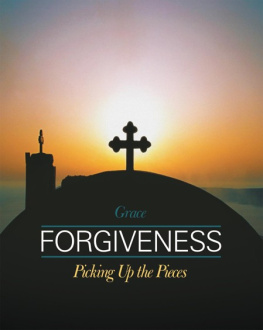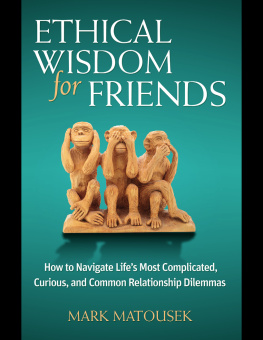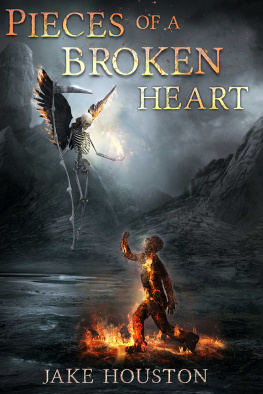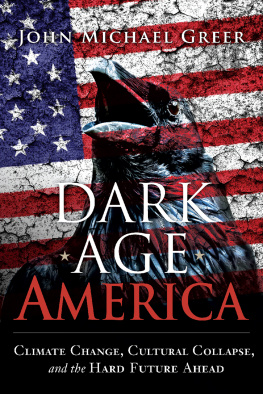a hundred
little pieces
on the end
of the world
john rember
a hundred
little pieces
on the end
of the world

2020 by John V. Rember
All rights reserved. Published 2020
Printed in the United States of America
Library of Congress Cataloging-in-Publication Data
Names: Rember, John, author.
Title: A hundred little pieces on the end of the world / John Rember.
Other titles: 100 little pieces on the end of the world
Description: Albuquerque: University of New Mexico Press, 2020.
Identifiers: LCCN 2019042719 (print) | LCCN 2019042720 (e-book) | ISBN 9780826361356 (cloth) | ISBN 9780826361363 (e-book)
Subjects: LCSH: Civilization, WesternForecasting.
Classification: LCC PS3568.E5574 H86 2020 (print) | LCC PS3568.E5574 (e-book) | DDC 814.54DC23
LC record available at https://lccn.loc.gov/2019042719
LC e-book record available at https://lccn.loc.gov/2019042720
Cover and text designed by Mindy Basinger Hill
for julie,
who casts a soft and
beautiful light
contents
foreword
In December of 1999 Julie and I acted in a play at the Duchess Theatre in Londons West End. The play was Michael Frayns Copenhagen. It staged a 1941 meeting between Niels Bohr and Werner Heisenberg. This meeting of those two physicists first collaborators, then enemiesmay or may not have kept the Nazis from developing the atomic bomb.
One of the conceits of Copenhagen is that posterity gets to pass judgment on the guilt or innocence of its forebears. To represent that judgment, a jury box formed the back of the stage.
Julie and I had seats in the jury box because we had shown up at the last moment for SRO tickets, and posterity was in short supply that night. We faced the audience. Six feet away were actors representing Bohr and Heisenberg and Bohrs wife, Margrethe, and we watched as they debated their future and our lives.
Our seats were a little public, but once the house lights came down, the rest of the audience was invisible. We put on our best judgmental faces and listened to Frayns lines as he explored the moral questions of conceiving, constructing, and using atomic weapons.
Copenhagen is a play about uncertainty. Appropriately, we left the theater without a verdict. But since that night I have decided that Werner Heisenbergs most diabolical invention
wouldnt have been the atomic bomb even if he had managed to produce twenty of them for his boss.
Instead, it would have remained his Uncertainty Principle. Heisenberg demonstrated that the more you know about where a subatomic particle is, the less you know about where its going, and vice versa. Put that way, it looks innocuous enough. But the Uncertainty Principle has, as a metaphor, neatly disconnected our past from our present and put our future out of reach. It has made all prediction suspect, all data conditional.
Some symptoms:
Truth exists only within a tribe. Darwinism is revealed as metaphysics. Multiple universes exist for a single entity.
Reality does not exist apart from discourse.
Schrdingers cat might be Schrdingers dog, or Schrdingers T. rex. Schrdinger himself might be in his hypothetical box, about to be dead or about to be alive.
There may be more than one box.
Im describing an evolution faster than the one Darwin had in mind. Contemporary humans are the result of an unnatural selection that has taken place ever since Plato started exploring the void between what he could see and what he could imagine. The extent of that evolution can be seen in the shadowy avatar reflected in the glass of your computer screen.
I write from Sawtooth Valley in central Idaho. Idaho is isolated from most of humanity by dry distance. Sawtooth Valley is isolated from the rest of Idaho by mountains. Its a refuge from which I can watch the feedback loops in global politics, climate, and economies as they approach the steep parts of their exponential curves.
In the pages that follow, I make predictions, but Im aware the future cant be predicted. Im trying instead to predict the present, which is difficult enough.
In these hundred short pieces, Ive tried to witness the here and now. It has not been easy for someone who used to consider witnessing a low-effort endeavor, one for lifes spectators rather than for people like myself, who could, through good will, improve the world.
Of late Ive realized how impossible it is to do the right thing once cause and effect has abdicated. Instead Ive tried to look at the world from this beautiful if small and temporary place, and to let you in on what I see and hear and think. Put another way, I hope to bring human-scale realities to the readers of this small book.
John Rember
SAWTOOTH VALLEY,
IDAHO, 2019
a hundred
little pieces
on the end
of the world
the way we live now
Life and love after collapse.
1
I know how to harness a horse to a plow. I know how to do basic blacksmithing and welding, pack a horse, shoe the same horse, and use a crosscut saw and broadaxe. I can fell a big tree in a desired direction, wind permitting. I know how to trap beaver, coyote, and muskrat, build a tight log cabin with hand tools and indigenous materials, kill and skin and cut up elk and deer, trim and adjust kerosene lanterns, irrigate, milk a cow, and take care of chickens. I can stay safe and warm while camping in below-zero temperatures and start fires in wet weather. I know basic wilderness medicine and can treat burns, open wounds, and broken legs.
Except for tree-felling every firewood seasonwith a gas-powered chainsawI havent used these skills in forty years. I dont miss using them. I dont ever want to use them again. Most of them were obsolete when I was born, and I would never have learned them except that when I was three my father quit his life as a hard-rock miner and moved to a small homestead in Sawtooth Valley in central Idaho to become a fishing and hunting guide and trapper.
Our household economy was mostly preindustrial. We kept chickens and packhorses and ate wild game and wild salmon. We heated with firewood, and, until the electrical grid reached us a few years later, we used oil lamps for light.
By the standards of our neighbors and my grade-school classmates, we were poor. My parents had mortgaged our familys future to buy our forty acres. I can remember nights when my parents stayed up late with their ledger, trying to figure out how they could make another seventy-five-dollar monthly payment when the clients were few and the expenses many.
A decade after we had moved to the valley, when the guiding business faltered because of the dam-caused destruction of Idahos salmon runs, my father contracted to build trails in the Sawtooth Primitive Area, where equipment with wheels wasnt allowed. We had to use packhorses and hand tools and child labor. Child labor was me.
I spent several adolescent summers staring at the back end of a harnessed horse, guiding a one-sided plow, peeling the hillside rocks out and down to make new trail. We were eighteen miles from a road. Our stove was a campfire. Our shower was a five-gallon fire-blackened steel bucket with a shower-head welded to its bottom. We ate fish and canned ham and, after the fresh greens ran out, canned peas, canned beans, and potatoes. Lots of potatoes.
All through those summers, sun-glittering B-52s flew thirty thousand feet above our heads, scattering aluminum chaff that decorated the alpine firs like Christmas tinsel. They reminded us that in a day or less, our tents and kitchen and sleeping cots, our shower bucket and creek-side food cache and even our unfinished trailthese could lose all meaning. The high valley we camped in, full of lakes, waterfalls, mossy meadows, and house-sized blocks of granite, would no longer be home to horse or human. Neither would anyplace else.
Next page









